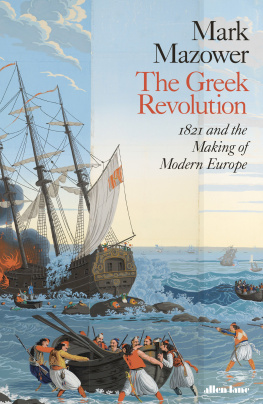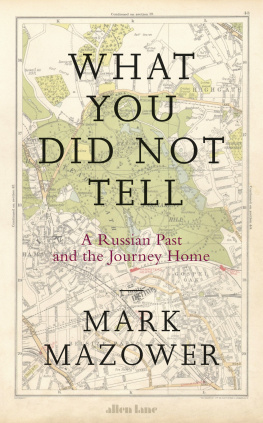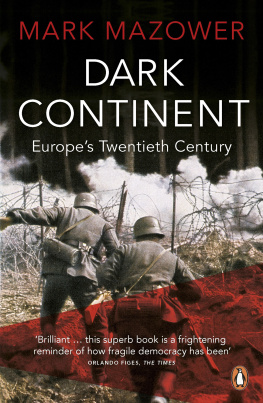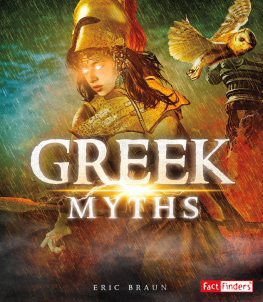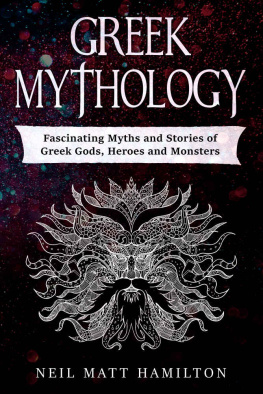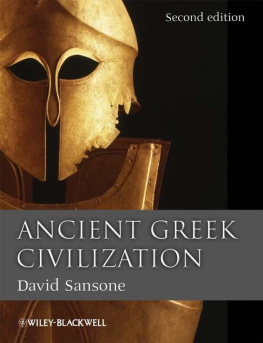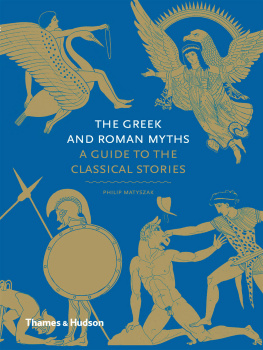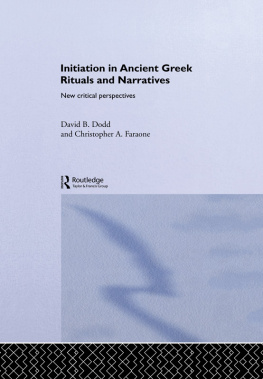
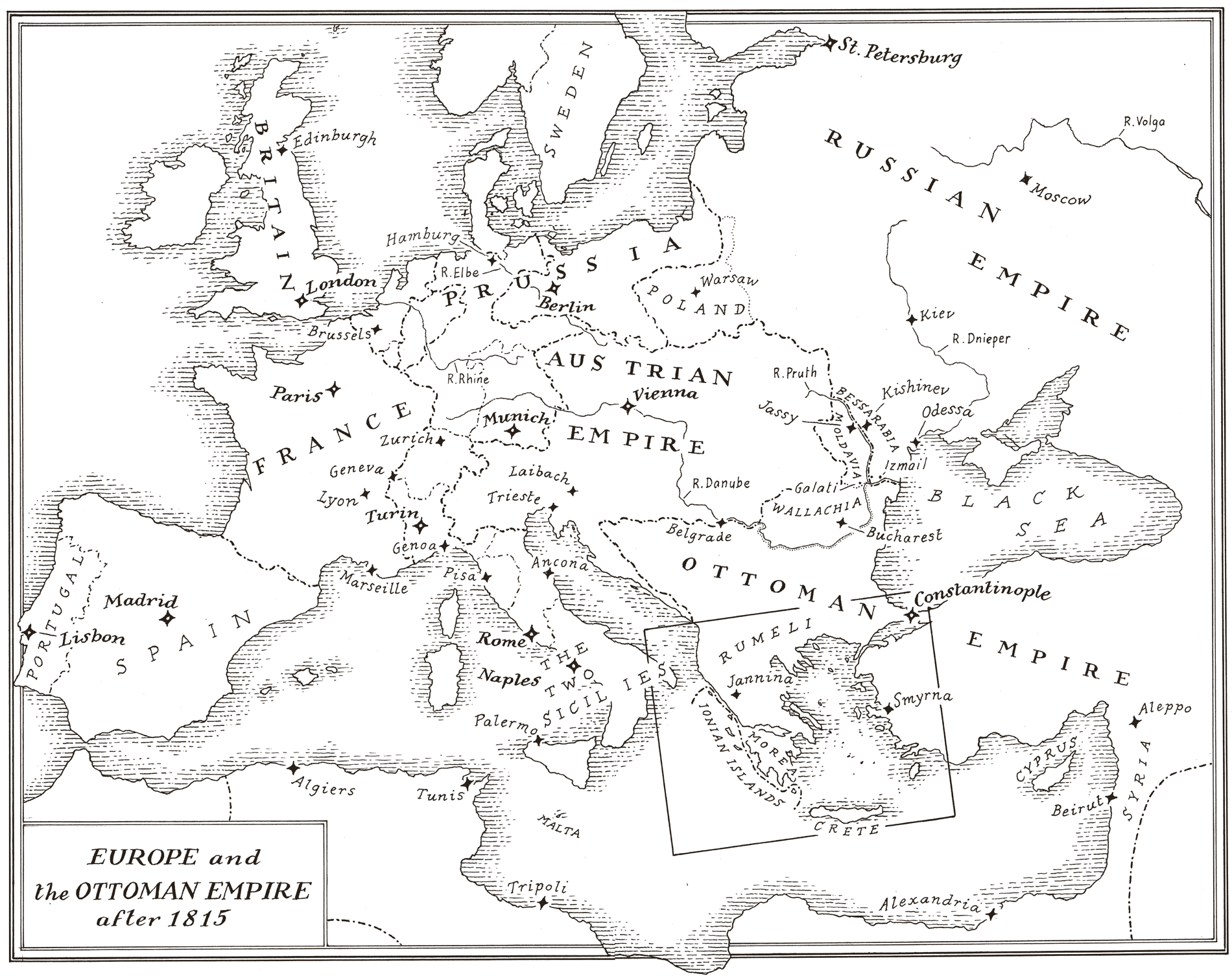
Mark Mazower
THE GREEK REVOLUTION
1821 and the Making of Modern Europe

PENGUIN BOOKS
UK | USA | Canada | Ireland | Australia
New Zealand | India | South Africa
Penguin Books is part of the Penguin Random House group of companies whose addresses can be found at global.penguinrandomhouse.com.

First published by Allen Lane in 2021
Copyright Mark Mazower, 2021
The moral right of the author has been asserted
Cover: Detail from Le Combat des Grecs, panoramic wallpaper created by Deltil for the Manufacture Zuber in 1827, still in print to this day
Copyright reproduction prohibited
Photograph: Dominique Giannelli
ISBN: 978-0-141-97875-8
This ebook is copyright material and must not be copied, reproduced, transferred, distributed, leased, licensed or publicly performed or used in any way except as specifically permitted in writing by the publishers, as allowed under the terms and conditions under which it was purchased or as strictly permitted by applicable copyright law. Any unauthorized distribution or use of this text may be a direct infringement of the authors and publishers rights and those responsible may be liable in law accordingly.
Acknowledgements
Research has been transformed out of all recognition by digitization and I am conscious of my debt to those many anonymous souls who have over the past few years scanned hundreds of books and journal articles and thousands of pages of documents. The range of primary materials now available online for this subject is breathtaking. But my research has also depended upon the kindness and generosity of friends and colleagues, scholars and booksellers. In the first place let me therefore acknowledge my debt in what is essentially a work of synthesis to two extraordinary generations of historians, notably: Denys Barau, Simos Bozikis, Antonis Diakakis, Dimitris Dimitropoulos, Maria Efthymiou, Haken Erdem, Athanasios Fotopoulos, Gelina Harlaftis, Marios Hatzopoulos, Georgios Kalpadakis, Giannis Kokkonas, Christina Koulouri, Sofia Laou, Christos Loukos, Herv Mazurel, Georgios Nikolaou, Vassilis Panayiotopoulos, Petros Pizanias, Charles Stewart and Dionysios Tzakis. And also to the booksellers who came to my rescue at a time when books could reach places that humans could not: Efi Flindri, Dimitris Retsas, George Stathopoulos and Lakis Vouyioukas in Athens and Vladimiros Vonas on Tinos. Id especially like to thank the following individuals for their help in various ways with the writing of this book: Antonis Hadzikyriakou, Gelina Harlaftis, Aristides Hatzis, Marios Hatzopoulos, George Kalpadakis, Kostas Kostis, Costas Kouremenos, Leonora Navari and Vasia Theodoropoulou in Athens, along with my forbearing publishers Takis Fragoulis and Victoria Lekka; Father Markos Foskolos, Vangelis Kontizas, Memi Papakonstantopoulou, George Sitaras and Marinos Souranis on Tinos; Simon Golding in Cambridge and Andrew Kahn in Oxford; James Allen, Brune Biebuyck, Marie dOrigny and Eve Grinstead in Paris; Dimitris Antoniou, Lee Bollinger, Afroditi Giovanopoulou, Susan Glancy, Rashid Khalidi, Yanni Kotsonis, Paul LeClerc, Charis Marantzidou, Daniel Sun Shao, Christina Shelby, Adam Tooze, Karen Van Dyck, Stelios Vassilakis and Konstantina Zanou in New York. I owe a special debt to Peter Mandler and Kostis Karpozilos for their thoughtful comments on an earlier draft; to my mother and my brothers for their support; and to Scott Moyers and Simon Winder for the all-round pleasure and privilege of working with them. Neil Gower crafted the two beautiful maps with which the book begins and ends. Costas Kouremenos and Richard Mason went beyond the call of duty in saving me from errors and infelicities and tolerating my last-minute authorial interventions. My children Selma and Jed uncomplainingly put up with piles of books on the kitchen table and added their own. Julie Fry not only made the writing of this one an immensely happy experience in a very difficult time but also improved it in innumerable ways; there is no page of this book that has not benefitted from her discerning eye. Many years ago, Fay Zika and her mother gave me their friendship and introduced me to Greece: this book is dedicated in gratitude to Fay and, in fond memory, to Calliope Bourdara.
Note on Names
Transliteration is a pedants dream and a perfectionists nightmare. In this book, I have tended to use k for the Greek letter kappa and y for ypsilon thus Kefalonia and Ypsilantis rather than Cefalonia and Ipsilantis; on the other hand, I have generally retained the conventional English form of well-known names thus Capodistrias and Hydra. By the same token, I prefer Athens, Corfu, Jannina and Crete to less common variants. Greek place names have undergone dramatic changes over the years and I have generally gone with names in common use at the time such as Navarino (rather than Pylos), Vostitsa (rather than Aigion), Modon, Jassy, Salona and Constantinople, though I drew the line at Napoli di Romania, which few readers would associate with the Peloponnesian port of Nafplion, and I have kept Syros rather than Syra, Kythera over Cerigo, and have always preferred Evvia to Euboea. Ottoman Tripolitsa was to all intents and purposes a different town to Greek Tripolis which today stands in its stead; Mesolonghi is a more faithful transliteration than Missolonghi. Where there are names in alternative variants in the sources, I have generally remained faithful to the original.
Topography creates more problems. I generally refer to the Cyclades and the islands of the east Aegean rather than to the Archipelago, which is how contemporaries commonly referred to them all or to the Isles of the White Sea which was the Ottoman term. The Morea is a well-known synonym for the Peloponnese but some readers may be unfamiliar with the use of Rumeli for the mainland north of the Gulf of Corinth; it was, however, a term used by both Greeks and Turks. Speaking of which, while I do use the term Greek, meaning Orthodox Christians who spoke Greek, I try for reasons explained in the Introduction to avoid the term Turk unless it appears in an original source or cannot otherwise be avoided.
The Orthodox Christians of the Ottoman Empire still used the Julian calendar in the 1820s and Greece would not move to the Gregorian calendar, in general use in the rest of Europe, until 1923, sometime after the Ottoman Empire (1917) and Russia (1918). In the period in question, the Julian calendar was twelve days behind the Gregorian. The approach taken in this book is to refer to the Julian calendar for events inside Greece, the Ottoman Empire and Russia, and to the Gregorian for events taking place in western and central Europe; in one or two places, I give both to avoid possible confusion.
List of Illustrations
Photographic credits are shown in parentheses. Every effort has been made to contact all rights holders. The publishers will be pleased to amend in future editions any errors or omissions brought to their attention.
. View of Istanbul, c. 1789, watercolour by Jean-Baptiste Hilaire. (Pera Museum, Istanbul, Turkey
Next page
